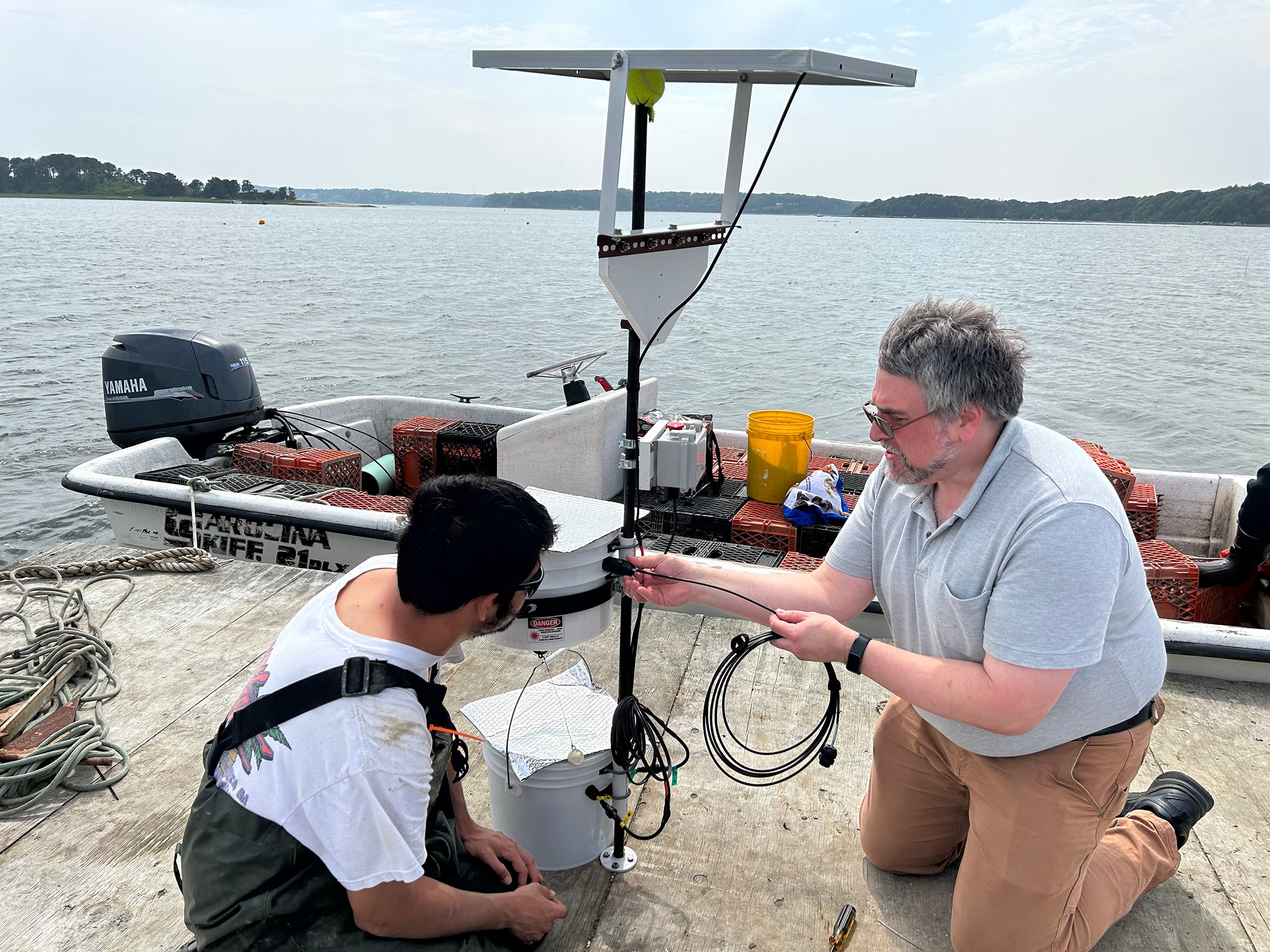KINGSTON, R.I., — Sept. 28, 2023 — The term “laser scarecrow” may seem straight out of a 1950s sci-fi movie (Think “War of the Worlds”, or “The Day the Earth Stood Still”). But to Rebecca Brown, professor and chair of the Department of Plant Sciences and Entomology, lasers are the wave of the future, when it comes to keeping birds away from terrestrial farms.
Now, a recent $29,998 grant will help her take what she’s learned on those farms over the past several years and apply it to keeping birds away from aquaculture as well. Two units that have been adapted for use in a saltwater environment are in use on aquaculture farms near Barnstable, Massachusetts.
The aquaculture version is just the latest grant in a project that began in 2014. At that time, Brown was looking into creating a small-scale rotating laser that could be used on smaller farms to frighten off avian pests. Red-winged blackbirds and other species wreak havoc on crops, devouring large chunks of the farmer’s profits along with corn. At that time there were few deterrents that could work on smaller farms. Existing lasers had been developed for large -scale operations such as airfields but were too cumbersome and far too expensive to be used on a smaller farm. That’s where Brown came in.
“What we did was look at this concept that’s been around for so long that the patents on it had expired. Modern low powered lasers like those used in nightclubs have really expanded in the past decade. There are also microcontrollers and improved solar panels and other ways the tech has changed. We wanted to come up with something affordable and effective that a farmer could use.”
Then came a new challenge. In 2019, the U.S. Food and Drug Administration, which regulates shellfish sanitation, created a new set of policies ordering all oyster farmers to make “every effort” to keep wildlife out of their farms. The measure was intended to both reduce human – animal conflicts as well as keep the oysters as clean as possible for human consumption. The Cape Cod Cooperative Extension knew of Brown’s work using lasers on terrestrial farms and approached her to develop a similar mechanism for use around oyster beds.
Most oyster farmers grow their crops in cages attached to floats on the surface. “The problem is that the birds look at all these floats and think that’s a good place to sit. Unfortunately, wherever birds sit, they leave bird droppings, and the bird droppings can contain bacteria like salmonella or other bacteria that cause foodborne illness in humans. Oysters are filter feeders and will treat bird waste as yet another food source. The bacteria don’t hurt the oysters. But then when people eat them raw, if that oyster is contaminated, a person can get sick.”
Dealing with that main issue was difficult enough, but Brown thought there might be problems with the mechanics in the laser device. “We had already talked about the fact that salt water would mean corrosion, with water potentially coming from the bottom of a device (in the form of waves) as well as the top (in the form of rainfall).”
Another question mark was whether the various shore birds would be sufficiently annoyed with the lasers to leave. For example, although cormorants and blackbirds are both birds, their behaviors are entirely different, so Brown knows that finding an effective method of using lasers is a step in the research process.
“We still must figure out what, if any, birds will even care. One challenge in particular is the cormorant. They’re pretty much at the top of their food chain. And that’s very different from blackbirds and starlings, which are much smaller. Plus, there are many birds like falcons that will happily eat a blackbird or a starling. So blackbirds are always on the lookout for ‘who’s going to eat me?’ and they’re ready to fly away. Nothing will eat cormorants, so they don’t feel as afraid.
“We won’t know if our ideas will work until we try them.”
This article was written by Hugh Markey

